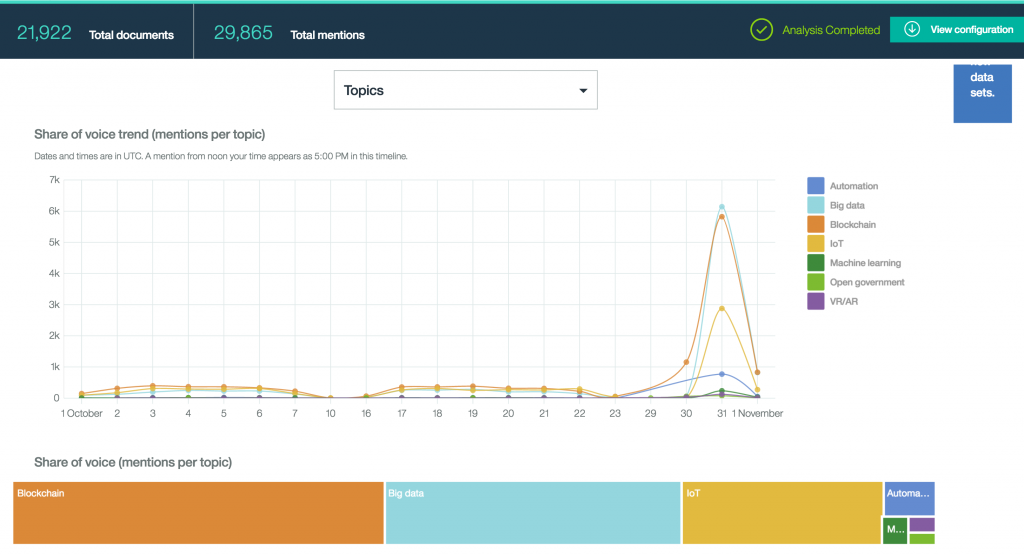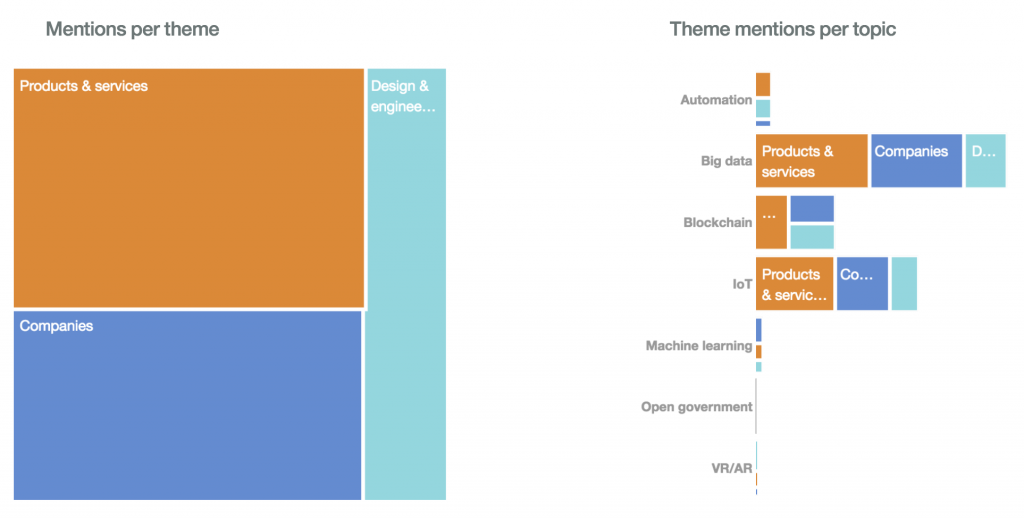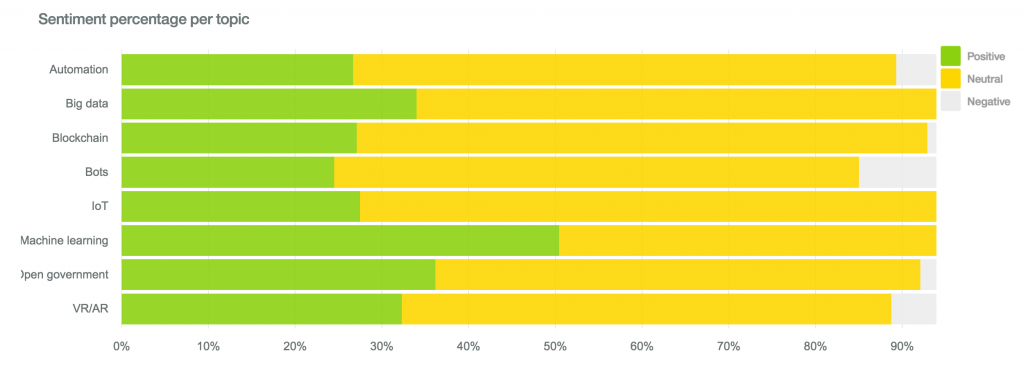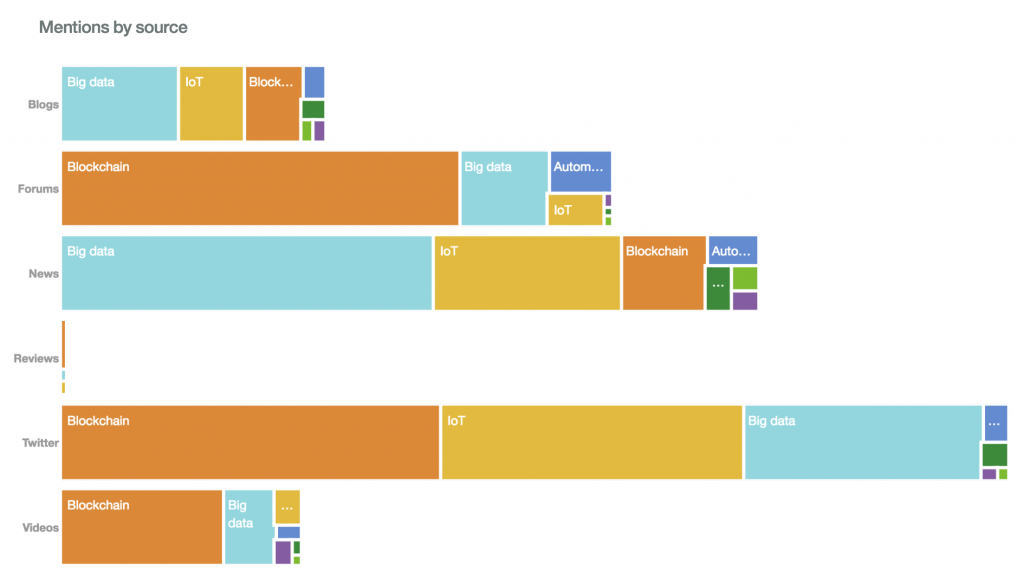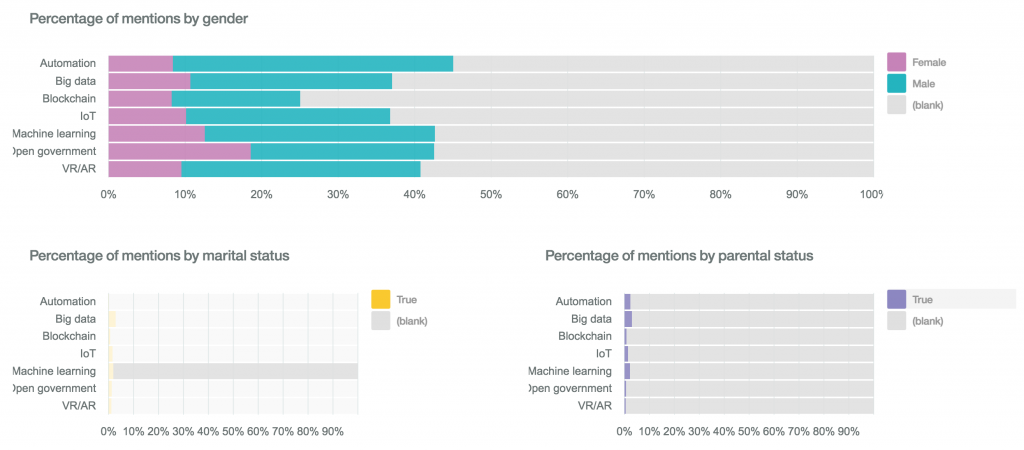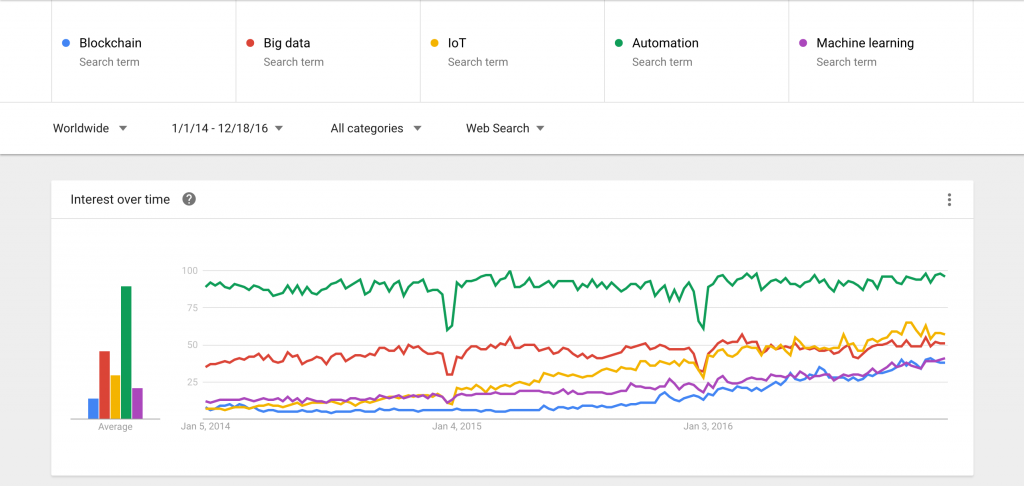5 Tech Trends of 2017 Using IBM Watson Analytics
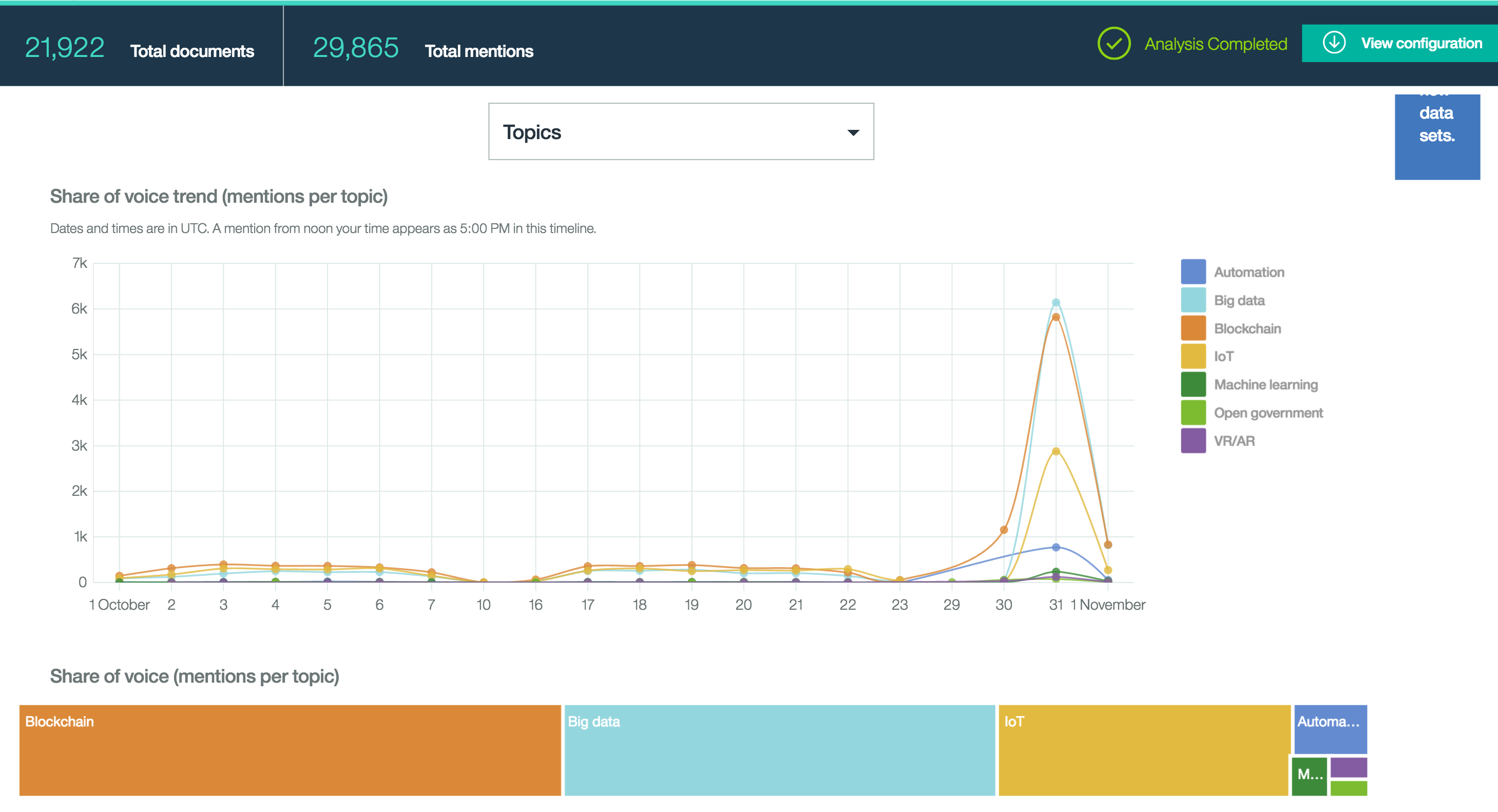
It is that time of the year when technology experts, journalists, analysts and enthusiasts write about the top tech trends of the year or predictions for the next year. While I was tempted to write one myself, I thought I needed to do something a little different. So I took the opportunity to learn how IBM Watson Analytics for Social Media and Google Trends could help make the tired Tech Trends post a bit more interesting. The post below is the result of using these analytics tools to validate some of my own assumptions based on the countless news articles, podcasts and Twitter updates I’ve been exposed to during the year.
Here are the findings.
Setting up Watson Analytics
Choosing the tech topics
I started by listing the topics that I have been exposed to through 2016 and I loaded them into Watson:
- Automation (robotics, robots, autonomous vehicles, self-driving cars)
- Big Data (analytics, business intelligence)
- Blockchain (virtual currency, crypto currency, bitcoin)
- IoT (intelligent home, home automation)
- Machine Learning (artificial intelligence, bots, chatbots)
- Open Government (online engagement, open data, civic tech, public engagement)
- Virtual Reality (VR/AR, augmented reality)
Date range
The free trial of IBM Watson Analytics for Social Media limits the number of documents that can be analyzed to 25,000. Given that I defined five very popular topics, even a small date range put me over the limit. So I set the date range to full month of October 2016. Watson retrieved the latest 22k documents, which I suspect is the cause for the concentration of activity on the last day of the range.
According to Watson, the topics with highest “Share of voice (mentions per topic)”—or the most popular topics—were, in order of popularity:
- Blockchain
- Big Data
- IoT
- Automation
- Machine Learning
Social Media Insights
Watson provides a few pre-defined visualizations out of the box. Here are the reports I found most interesting from the pre-defined visualizations:
Themes
Watson lets analysts define themes as a secondary dimension to help them measure discussions relative to themes across topics. I used this feature to understand what types of discussions were taking place. I defined the following themes:
- Design & Engineering
- Products & Services
- Companies
- Academia
Considering social media is a channel primarily used for marketing and advertising, it wasn’t surprising to see that the most popular themes were Products & Services, and Companies. Most mentions seemed to be promoting some product or service by a certain company. One exception to this assumption was the case of Blockchain, where Design & Engineering represented one third of the discussions, pointing to a more technical niche for this particular topic.
Sentiment
Perhaps not surprisingly, the most positive mentions were related to Machine Learning and Open Government, two areas with great promise for social good and at least so far, being supported by strong ethical principles. The most negative discussions were about Bots and Automation, likely in connection with the automation of jobs, job loss, economic stagnation and other negative effects that technology automation is having on the world economy.
Mentions by source
Another interesting visualization shows that, while centralized and perhaps mainstream content outlets (blogs and news) are focused on Big Data and IoT, online communities (such as forums, user-generated videos) are forming around Blockchain discussions. Twitter, a channel likely used by all the other sources to broadcast and amplify their content, seems to slightly prioritize the community-driven discussions on Blockchain, followed closely by IoT and Big Data.
Demographics
Unfortunately, technology conversations are still dominated by men. The topics with the highest female participation were Open Government and Machine Learning—the same topics with the highest positive sentiment. When it comes to marital and parental status, Watson seems to capture very little data, making the insights for these specific metrics feel incomplete and therefore unreliable.
Trends
IBM Watson was great at providing a snapshot based on a small dataset, but I wanted to understand how the interest around these topics has been developing over the past three years, from January 2014 to December 2016. Google Trends provided some interesting insights.
Interest over time
IoT was the technology with the highest growth in global searches, followed by Blockchain and Machine Learning. Although still dominant, Automation hasn’t seen much change during the same period. Big Data has also stayed fairly stable.
Interest by region
Most OECD member countries have place their attention on Automation, which isn’t surprising given the developed world’s concern on the automation of jobs. Search concentration in Russia and Venezuela, South America’s leftmost leaning country, was around Blockchain, while the rest of South America was split between IoT and Big Data. Machine Learning seems to have been dominant only in China so far.
Searches with the biggest increase
The search queries per topic with the biggest increase since the last time period were:
- Ethereum (Blockchain)
- Apache Spark (Big Data)
- Windows 10 (IoT)
- VRealize (Automation)
- TensorFlow (Machine Learning)
Conclusion
Automation has been dominant for the past few years, and IoT has been receiving a lot of attention recently. Blockchain and Machine Learning are the fastest growing topics. These emergent topics seem to find most popularity in Eastern Europe and Asia (Blockchain in Russia and Machine Learning in China). As autonomous systems become more and more sophisticated, we can expect Machine Learning to continue to grow in popularity in 2017 and beyond. The use of Blockchain in trust systems and identity management may push the technology beyond cryptocurrency, out of technical niches, and towards wider global adoption, although 2017 seems too soon for this technology to displace the other technologies reviewed in this post.
